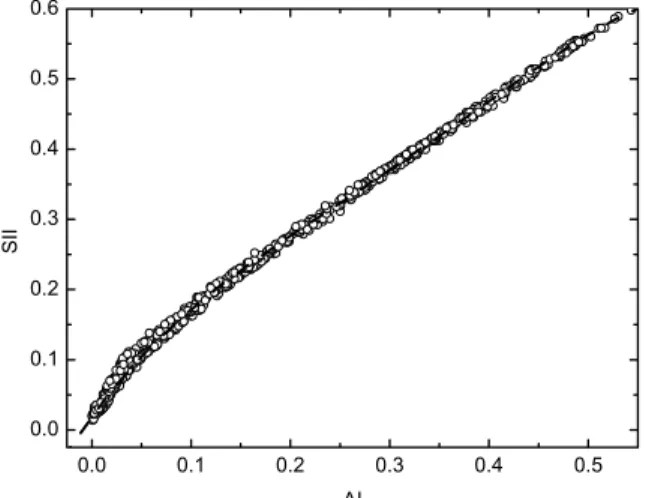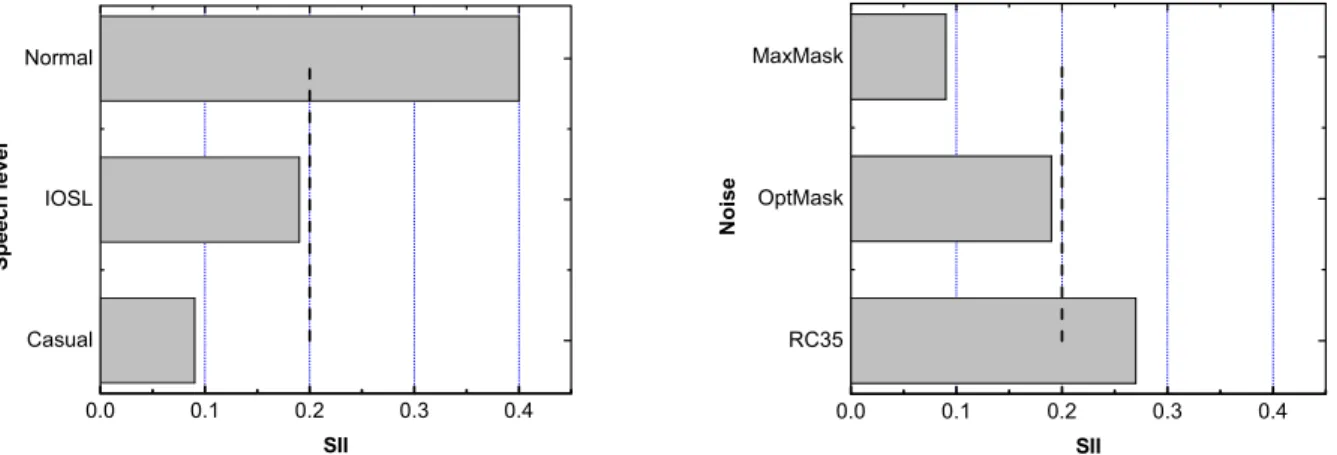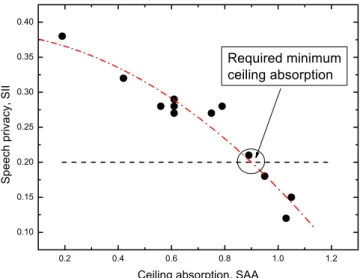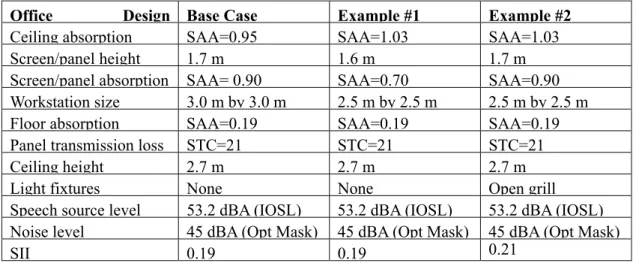Publisher’s version / Version de l'éditeur:
Vous avez des questions? Nous pouvons vous aider. Pour communiquer directement avec un auteur, consultez la première page de la revue dans laquelle son article a été publié afin de trouver ses coordonnées. Si vous n’arrivez pas à les repérer, communiquez avec nous à PublicationsArchive-ArchivesPublications@nrc-cnrc.gc.ca.
Questions? Contact the NRC Publications Archive team at
PublicationsArchive-ArchivesPublications@nrc-cnrc.gc.ca. If you wish to email the authors directly, please see the first page of the publication for their contact information.
https://publications-cnrc.canada.ca/fra/droits
L’accès à ce site Web et l’utilisation de son contenu sont assujettis aux conditions présentées dans le site LISEZ CES CONDITIONS ATTENTIVEMENT AVANT D’UTILISER CE SITE WEB.
Inter-Noise 2003 [Proceedings], pp. 1-8, 2003-08-01
READ THESE TERMS AND CONDITIONS CAREFULLY BEFORE USING THIS WEBSITE.
https://nrc-publications.canada.ca/eng/copyright
NRC Publications Archive Record / Notice des Archives des publications du CNRC :
https://nrc-publications.canada.ca/eng/view/object/?id=eb59b2c3-e3d9-4c4d-a8f0-39979343ede6 https://publications-cnrc.canada.ca/fra/voir/objet/?id=eb59b2c3-e3d9-4c4d-a8f0-39979343ede6
NRC Publications Archive
Archives des publications du CNRC
This publication could be one of several versions: author’s original, accepted manuscript or the publisher’s version. / La version de cette publication peut être l’une des suivantes : la version prépublication de l’auteur, la version acceptée du manuscrit ou la version de l’éditeur.
Access and use of this website and the material on it are subject to the Terms and Conditions set forth at
A Renewed look at open office acoustical design
Bradley, J. S.
A Renewed look at open office acoustical design
Bradley, J.S.
NRCC-46399
A version of this document is published in / Une version de ce document se trouve dans :
Inter-Noise 2003, Seogwipo, Korea, August 25-28, 2003, pp. 1-8
The 32nd International Congress and Exposition on Noise Control En
N1034 - A Renewed Look at Open Office Acoustical Design
J.S. Bradley
National Research Counci Ottawa Canada, K1A 0R6
gineering Jeju International Convention Center, Seogwipo, Korea,
August 25-28, 2003
l, Montreal Rd.,
Email address: john.bradley@nrc.ca
ABST ACT
Although open offices with conventional c ns are very common, it is still difficult to
INTRODUCTION
Open plan offices with rectangular wor ve gradually become the predominant
R
ubicle workstatioachieve acceptable speech privacy even in situations where the acoustical design is seriously considered. Speech privacy criteria were initially given in terms of the Articulation Index (AI) but should now be converted to be in terms of the newer Speech Intelligibility Index (SII). Other new work gives us a better indication of likely speech levels in open plan office environments. These are essential for accurate estimates of speech privacy criteria. A recently published model of sound propagation between workstations is used to demonstrate the importance of design parameters on the resulting speech privacy and to derive minimum acoustical requirements for open office ceilings.
KEYWORDS: Open offices, speech privacy, ceiling absorption
kstations (cubicles) ha
format of office space in North America. The absence of full height walls makes it difficult to achieve an acceptable level of acoustical or speech privacy between adjacent workstations. It is usually assumed that lack of privacy and the resulting increased distraction will make office workers less efficient. However achieving acceptable speech privacy requires the consideration of a large number of interacting parameters. This problem has recently been made much easier to solve as a result of the development of a mathematical model of sound propagation between workstations in conventional open plan offices [1-4]. Using this model one can conveniently and quite accurately predict the speech privacy of a particular open plan office design. The model is used to demonstrate the importance of each open office design parameter. This paper first discusses measures of speech privacy and speech privacy criteria. The influences, on speech privacy, of office design parameters are then considered and the minimum acoustical requirement for open plan office ceilings is derived.
Measures and Criteria for Speech Privacy
Both speech privacy an oise ratios. If speech
of mock d speech intelligibility are related to existing signal-to-n
(signal) levels are low relative to ambient noise levels, the corresponding low signal-to-noise ratio indicates speech privacy will be high. The Articulation Index (AI) [5] is a weighted signal-to-noise ratio type measure that has been used to assess speech privacy in open plan offices. More recently, the AI has been replaced by the Speech Intelligibility Index (SII) [6]. This is a little more complex than AI and includes the masking effect of lower frequency components on each frequency band. AI and SII have values between 0 and 1, but corresponding SII values are a little larger than AI values.
A relationship between AI and SII values was derived using measured attenuations in a series
up workstation tests to calculate both AI and SII values. By repeating these calculations for a range of speech and noise levels, a very wide range of values of each measure was obtained. The resulting SI values are plotted versus AI values in Fig. 1. The regression line shown on this plot is a fourth order polynomial that quite accurately fits the data between AI values of 0 and 0.5. Its equation is as follows,
SII = 0.0194+1.942 AI –5.263 AI2 +11.731 AI3 –9.247 AI4.
Level of speech AI SII
privacy
Confidential 0.05 0.10
Acceptable 0.15 0.20
able 1. Speec y crit n term
of AI and SII 0.0 0.1 0.2 0.3 0.4 0.5 0.0 0.1 0.2 0.3 0.4 0.5 SI I AI 50 0.6 T h privac eria i s
Fig. 1. Relationship between SII and AI values.
125 250 500 1000 2000 4000 30 35 40 45 50 55 SP L, d B Frequency, Hz Casual IOSL Normal
Fig. 2. Speech source spectra used in calculations.
125 250 500 1000 2000 4000 15 20 25 30 35 40 45 SPL, dB Frequency, Hz Optimum masking Maximum masking
It has been conventional to refer to two levels of criteria for speech privacy and to relate them to corresponding AI values. ‘Confidential privacy’ has been said to correspond to AI ≤ 0.05. This has been defined as corresponding to ‘zero phrase intelligibility with some isolated words being intelligible’ [7]. Conditions corresponding to AI ≤ 0.15 have been described as ‘acceptable’ or ‘normal privacy’ for open plan offices [8]. Such conditions are said to be not too distracting. In practice AI ≤ 0.15 corresponds to a level of speech privacy that can be achieved in a well-designed open plan office. These two speech privacy criteria and their equivalent SII values are included in Table 1. Ongoing work is investigating the interpretation of these criteria.
Speech and Noise Levels
Speech privacy and the calculation of AI and SII values depend on the speech and noise levels in open plan offices. The AI and SII standards [5,6] include standard speech spectra for ‘normal’ speech. The ‘normal’ voice level spectrum in the SII standard corresponds to 59.2 dBA. Although ‘normal’ speech levels have been used to estimate speech privacy in open plan offices, Warnock and Chu [9] have recently published measurements of speech levels in open offices that indicate people talk more quietly than this ‘normal’ spectrum. Their data indicate an average speech source level of 50.2 dBA, which is essentially the same as Pearson’s ‘casual’ speech level [10]. This level represents the average of all talkers that were measured in a number of open plan offices. If this level were used in design calculations, it would underestimate the disturbance caused by the louder half of the talkers that talk more loudly than this average level. Therefore, an Intermediate Office Speech Level (IOSL) spectrum was created that had an A-weighted level approximately 1 standard deviation higher in level than the mean value and that corresponds to a speech source level of 53.2 dBA. Using this more conservative speech source level in open office design, only about 16% of talkers would be expected to talk louder than this. The ‘normal’, ‘casual’ and IOSL speech spectra are included in Fig. 2.
The level and spectrum shape of ambient noise in the office also significantly influences the degree of speech privacy and the related AI and SII values. Although increased noise levels lead to increased speech privacy, there is a limiting noise level above which the noise becomes more disturbing and less beneficial. Because it is difficult to carefully control the level and spectrum of actual ventilation noise, and because it will vary with the operation of the ventilation system, the desired speech privacy can be more precisely achieved using electronic masking sound. The spectrum of such masking sound should include energy at all frequencies with significant speech energy, and should sound like a neutral ventilation noise. Such spectrum shapes have been specified [11] and an optimum masking spectrum shape is included in Fig. 3. There are also rules of thumb that the overall level of masking sound (or natural ambient noise) should not exceed 48 dBA [12]. Recent studies of worker satisfaction in an experimental open office found that an ambient noise level of 45 dBA was most preferred [13]. Therefore an optimum masking noise should have a spectrum similar to that in Fig. 3 and a level of 45 dBA. Masking sound levels should probably never exceed 48 dBA.
The Influence of Office Design Parameters
The model described by Wang [1-4] was implemented in open office design software and can be used to demonstrate the effects of varying office design parameters as well as speech and noise levels. It assumes that the source talker is at the centre of one workstation and the receiver listener is at the centre of an adjacent workstation. The user can specify speech source and noise spectra, geometrical dimensions, as well as the sound absorbing properties of surfaces. The program calculates speech privacy in terms of the SII value due to the speech propagating from the adjacent workstation and the specified office noise spectrum and level.
In the model, the effects of various reflecting surfaces are determined using an image sources technique. It also includes diffraction over the partial height panel separating the two workstations and includes further reflections of this diffracted sound energy. It was developed because available room acoustics ray tracing programs were not able to include diffraction and subsequent reflections of the diffracted energy. The program also includes empirical corrections for the difference between laboratory measurements of ceiling absorption and those values measured in a large series of tests of propagation in a mock up open office. There are similarly empirical corrections for the effects of ceiling mounted light fixtures.
The sound absorption and sound transmission loss data used were representative of real screens and ceilings. They were obtained by averaging groups of test results for products with similar acoustical properties. The sound absorption ratings are referred to by their Sound Absorption Average (SAA) value. (SAA is the average of the 1/3 octave band absorption coefficients from 200 to 3.15k Hz and replaces NRC rating [14]). The Sound Transmission Class (STC) [15] is used to describe the transmission loss of panels.
The effect of the speech source level on the resulting SII values determined using the model is illustrated in Fig. 4 for the Base Case design described in Table 2. Fig. 5 similarly illustrates the effect of ambient noise level on speech privacy for a 45 dBA optimum masking spectrum (OptMask), a 48
RC35 OptMask MaxMask 0.0 0.1 0.2 0.3 0.4 SII No is e
Fig. 5. Effect of ambient noise on Base Case design.
Casual IOSL Normal 0.0 0.1 0.2 0.3 0.4 SII Speech l evel
dBA maximum masking spectrum (MaxMask) and an RC35 spectrum. Both speech and noise levels can have larger effects on the resulting speech privacy than most office design details. If people talk too loudly or if ambient noise levels are very low, it will be impossible to achieve acceptable speech privacy in the open office.
Office Design Parameter Base Case Value Minimum Value
Ceiling absorption SAA = 0.95 SAA=0.90
Screen/panel height 1.7 m 1.65 m
Screen/panel absorption SAA = 0.90 SAA = 0.80
Workstation plan size 3.0 m by 3.0 m 2.8 by 2.8 m
Floor absorption SAA = 0.19 SAA=0.19
Screen/panel transmission loss STC = 21 STC = 20
Ceiling height 2.7 m 2.6 m
Light fixtures None None
Speech source level 53.2 dBA (IOSL speech) 53.2 dBA (IOSL speech)
Noise level 45 dBA (optimum masking) 45 dBA (optimum masking)
Calculated SII 0.19 0.23
Table 2. Details of the ‘acceptable’ Base Case used in calculations and minimum estimated acceptable values. (SAA, Sound Absorption Average [14], STC, Sound Transmission Class [15], IOSL, Intermediate Office Speech Level).
The individual effects of varying each of the 10 parameters (listed in Table 2) have been published [16]. They illustrate that: ceiling absorption, screen/panel height, and workstation plan size have the most effect on SII values. However, screen/panel absorption, floor absorption, ceiling height and the type of lighting can all influence speech privacy conditions. Varying one parameter at a time from the Base Case design led to the minimum values for achieving ‘acceptable’ privacy included in the right hand column of Table 2. However, if all of these values are used instead of the Base Case values the
0.35 0.30 0.25 0.20 0.15 0.4 0.5 0.6 0.7 0.8 0.9 1.0 1.1 1.3 1.4 1.5 1.6 1.7 1.8 1.9 S cre en h e igh t, m Ceiling SAA
Fig. 6. Contour plot of calculated SII values for varied ceiling absorption (SAA) and varied
screen/panel height, m.
speech privacy decreased to a little below ‘acceptable’ with SII = 0.23.
SII values were determined for a range of values of each of the parameters listed in Table 2. Although many combinations of the 10 variables are possible, very few of these lead to acceptable speech privacy. ‘Acceptable’ speech privacy can only be achieved when all office design parameters are close to optimum. Therefore the calculations focused on deviations from an ‘acceptable’ Base Case design (described in Table 2). These results illustrate the range of conditions that should be of most interest to designers.
As an example, the combined effect of ceiling absorption and screen/panel height is illustrated in Fig. 6. Only very limited ranges of combinations of these variables lead to ‘acceptable’ privacy. That is, ceiling absorption must correspond to values of SAA ≥ 0.90 but for more typical screen/panel heights (1.65-1.70 m) ceiling absorption should correspond to SAA ≥ 0.95.
Minimum Ceiling Absorption
Because ceiling absorption is a particularly important office design parameter that often limits the possible level of privacy achievable, further calculations were performed to estimate the minimum ceiling absorption that would at least make possible ‘acceptable’ speech privacy. SII values were calculated for a pair of workstations with design details corresponding to those of the Base Case given in Table 2. For this Base Case design calculations were repeated while systematically varying the ceiling absorption. The results, shown in Fig. 7 indicate that a minimum ceiling absorption for achieving ‘acceptable’ speech privacy is SAA= 0.90. This ceiling absorption does not guarantee acceptable speech privacy; it just makes it possible if all other aspects of the design are close to or better than the values used in the Base Case design. In practice it would be better to have a more absorptive ceiling than this to compensate for the limitations of other design parameters.
0.2 0.4 0.6 0.8 1.0 1.2 0.10 0.15 0.20 0.25 0.30 0.35 0.40 Spe ech pr iva cy, SI I
Ceiling absorption, SAA
Required minimum ceiling absorption
Fig. 7. Speech privacy, in terms of SII, versus ceiling absorption (SAA) for variations from the Base Case design.
Design Trade-offs
The Base Case design, described in Table 2, represents a combination of values that just meet the criterion for ‘acceptable’ privacy. Small degradations of one design parameter can be compensated for by augmenting the values of other parameters to still achieve ‘acceptable’ speech privacy. For example, decreasing the workstation plan size to 2.5 m by 2.5 m, reducing the separating panel height to 1.6 m, and reducing the panel absorption to SAA=0.70 would still result in an SII of 0.19 if the ceiling absorption were increased to an SAA of 1.03. Alternatively the same increased ceiling absorption could be used to compensate for reduced plan size and the addition of open grill lighting. The details of these examples are compared with those of the Base Case in Table 3. A difference in SII of less than 0.03 is probably not readily detectable.
These examples illustrate that there is not much room to compromise in trading off increases in one parameter to compensate for decreases in another. Most significant deviations from the Base Case will result in open offices with less than ‘acceptable’ speech privacy. In particular the reduction of workstation plan size must be accompanied by an improved ceiling absorption to maintain conditions of ‘acceptable’ speech privacy. The expected saving for a higher density office with smaller workstations may be reduced by the increased cost of a more absorptive ceiling.
Office Design Base Case Example #1 Example #2
Ceiling absorption SAA=0.95 SAA=1.03 SAA=1.03
Screen/panel height 1.7 m 1.6 m 1.7 m
Screen/panel absorption SAA= 0.90 SAA=0.70 SAA=0.90
Workstation size 3.0 m by 3.0 m 2.5 m by 2.5 m 2.5 m by 2.5 m
Floor absorption SAA=0.19 SAA=0.19 SAA=0.19
Panel transmission loss STC=21 STC=21 STC=21
Ceiling height 2.7 m 2.7 m 2.7 m
Light fixtures None None Open grill
Speech source level 53.2 dBA (IOSL) 53.2 dBA (IOSL) 53.2 dBA (IOSL)
Noise level 45 dBA (Opt Mask) 45 dBA (Opt Mask) 45 dBA (Opt Mask)
SII 0.19 0.19 0.21
Table 3. Details of open office designs with approximately ‘acceptable’ speech privacy.
Conclusions
This paper has reviewed the requirements for acceptable speech privacy in conventional (cubicle) open plan offices. The newer SII measure of speech privacy has been related to the older AI and speech privacy criteria have been given in terms of both quantities.
Of the office design parameters considered, ceiling absorption, screen/panel height and workstation plan size have the largest effects on speech privacy. However, only a very limited range of these parameters will lead to acceptable speech privacy. Although they have smaller effects, screen/panel absorption, floor absorption, screen/panel transmission loss, ceiling height and the type of ceiling
lighting all influence speech privacy and cannot be ignored. Although increases in one parameter can compensate for decreases in another, the range of possible trade-offs is very small and all office design details must be close to ideal values to achieve ‘acceptable’ speech privacy.
Speech and noise levels can have very large effects on the resulting speech privacy. It is therefore important to have an office etiquette that encourages people to talk more quietly and to meet for discussions elsewhere. Because too little ambient noise can be as much a problem as too much, carefully designed electronic masking sound systems are an important part of an open office design. One cannot expect to obtain high levels of speech privacy in an open plan office, but with careful attention to all details of the acoustical design an acceptable level of privacy is possible.
References
1. Wang, C. and Bradley J.S., “A Mathematical Modelfor a Single Screen Barrier in Open-plan Offices”,
App. Acoust., 63, 849-866 (2002).
2. Wang, C. and Bradley, J.S., “Prediction of the Speech Intelligibility Index Behind a Single Screen in an Open-plan Office”, App. Acoust., 63, 867-883 (2002).
3. Wang, C. and Bradley J.S., “Sound Propagation between Two Adjacent Rectangular Workstations in an Open-plan Office, I: Mathematical Modeling”,
App. Acoust. 63, 1335-1352 (2002).
4. Wang, C. and Bradley J.S., “Sound Propagation between Two Adjacent Rectangular Workstations in an Open-plan Office, II: Effects of Office Variables”, App. Acoust. 63, 1353-1374 (2002). 5. ANSI S3.5-1969, American National Standard,
“Methods for the Calculation of the Articulation Index”.
6. ANSI S3.5-1997, American National Standard, “Methods for Calculation of the Speech Intelligibility Index”.
7. Cavanaugh, W.J., Farrell, W.R., Hirtle, P.W., and Watters, B.G., “Speech Privacy in Buildings”, J.
Acoust. Soc. Am. 34, 475-492 (1962).
8. CSA Standard Z412-00, “Guideline on Office Ergonomics”, (2000).
9. Warnock, A.C.C. and Chu. W, “Voice and Background Noise Levels Measured in Open Offices”, IRC Report IR-837, (2002).
10. Olsen, W.O., “Average Speech Levels and Spectra in Various Speaking/Listening Conditions: A Summary of the Pearson, Bennett, and Fidell (1977) Report”, J. Audiology, 7, 1-5 (1998). 11. Beranek, L.L. “Noise and Vibration Control”,
(page 593) McGraw Hill, 1971.
12. Warnock, A.C.C., “Acoustical privacy in the landscaped office”, J. Acoust. Soc. Am., 53, 1535-1543 (1973).
13. Veitch, J.A., Bradley, J.S., Legault, L.M., Norcross, S.G., and Svec, J.M., “Masking Speech, Simulated Ventilation Noise, and Spectral Composition Effects on Acoustic Satisfaction”,
IRC Report IR-846 (2001).
14. ASTM C423-99a, “Standard Test Method for Sound Absorption and Sound Absorption Coefficients by the Reverberation Room Method”. 15. ASTM E413-87, “Classification for Rating Sound
Insulation”.
16. J.S. Bradley, “The Acoustical Design of Conventional Open Plan Offices, Canadian




